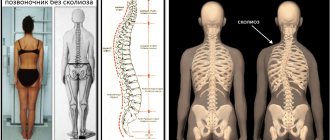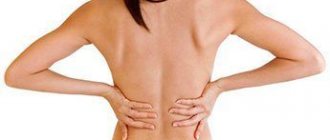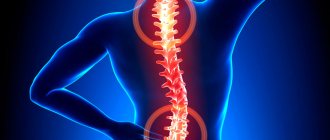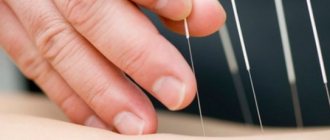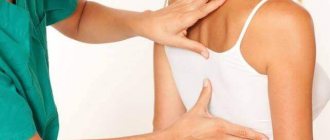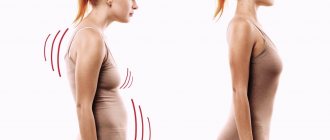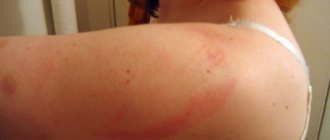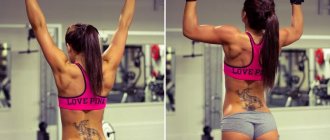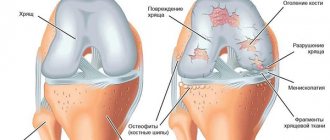16 September 2020
36212
0
4.1 out of 5
S-shaped scoliosis is the second most severe type of spinal curvature in the direct projection. It is characterized by the formation of two differently directed bending arcs, one of which is the main one, and the second is compensatory, i.e., formed in response to the formation of the first. Thus, S-shaped scoliosis differs from C-shaped scoliosis, in which the main curve is located in the thoracic spine. In an effort to restore stability and the vertical axis of the body, compensatory mechanisms are activated, resulting in the formation of a second arch with a bend in the opposite direction.
The pathology develops slowly, without pronounced symptoms, so it is most often discovered during a preventive medical examination. At the same time, S-shaped scoliosis can cause significant harm to the body and cause displacement of internal organs, which will be accompanied by severe pain and the inability to remain in an upright position for a long time. Therefore, the disease must be detected as early as possible and measures taken immediately to eliminate it.
Most often, S-shaped scoliosis is found in children and adolescents 8-16 years old and in older people who already had minor spinal deformities.
What is stage 2 scoliosis?
With grade 2 scoliosis, the angle of curvature of the spine is from 10° to 25°. No serious deformation of the spine is observed, but at this stage the blood vessels are already compressed. This is a prerequisite for the development of disorders of the blood supply to organs. Despite the relatively small degree of curvature, grade 2 scoliosis manifests itself as a slight asymmetry of the body, which is visible during a medical examination. This condition is dangerous because the disease progresses quickly and can become more serious.
Risk factors and causes
Scoliosis can appear in a person of any age, including in completely healthy people.
This pathology can be caused by the negative impact of the following factors::
- regular non-compliance with doctors’ recommendations regarding correct posture and requirements for organizing the workplace;
- low level of physical activity;
- the presence of problems with connective tissue;
- carrying heavy objects.
The reasons for the appearance of curvatures in the spine can also be different.
Wrong lifestyle , in particular, staying in one position for a long time. This position is undesirable for the spine and in case of incorrect posture, the uncomfortable posture is assumed due to the elasticity of the bones, especially in childhood. In this case, the s-shaped curvature is a consequence of compensation processes, which is doubly dangerous. Compensatory curvature appears higher than the primary one. Thus, curvature in the lumbar area necessarily causes the appearance of curvature at chest level. This poses a serious health threat because it causes curvature of the ribs, as well as the heart and lungs.
Excess body weight , which creates additional pressure on the spine. The type of obesity is important. The pear-shaped type puts more pressure on the lower back, while the apple-shaped type puts more pressure on the chest and neck. Most often, obesity accompanies a sedentary lifestyle and becomes its consequence.
Changes in the muscle tone of the corset . In this case, scoliosis develops as a consequence of powerlifting, especially with an incorrectly structured training regimen that puts a large load on the same muscle groups. As a result, the muscle corset is destroyed and the spine gradually warps. Lifting weights makes the situation worse.
Serious injuries and fractures cause curvature of the spine in all cases. If a person does not wear a corset, then the curvature will only increase due to damage and muscle atrophy, especially if the person goes through a long rehabilitation period.
Consequences
Due to the curvature of the spine, the ribs begin to deform, which leads to improper functioning of the internal organs. In the absence of therapeutic measures, the deformation of the spinal column begins to intensify and gradually leads to displacement of the ribs .
Then the work of the heart and lungs becomes impaired. Over time, complications only intensify. Due to the increasing load, a person experiences shortness of breath. The pressure gradually increases and the pulse quickens. In these cases, reducing blood pressure using drugs is almost impossible.
An advanced form of scoliosis causes the development of ischemia . Sometimes neurological abnormalities, noticeable by muscle twitching, are accompanied by loss of sensitivity in certain areas of the skin. There may even be loss of vision.
Curvature of the spinal column in the lumbar region provokes pinched nerve endings , malfunctioning of the gastrointestinal tract, reproductive and urinary systems. Most often, patients begin to complain of weakness of the abdominal muscles, flatulence, swelling in the legs, and constipation.
The most dangerous complication is spinal cord compression , which can result in paralysis of the lower extremities. All changes may be accompanied by disturbances in the patient’s psychological state.
Causes of the disease
Scoliosis 2 degrees develops for the following reasons:
- Incorrect position of the spinal column during study, work and rest.
- Incorrect distribution of the load on the spine (for example, carrying a bag in one hand).
- Deficiency of vitamins and microelements: vitamin D, phosphorus and calcium.
- Chronic infectious diseases.
- Spinal injuries.
- Congenital pathologies.
In most cases, grade 2 scoliosis is a consequence of an unhealthy lifestyle and is very often diagnosed in school-age children.
Prevention
For children, it is very important to choose the right furniture and mattress on which the child sleeps. It is impossible to ensure the prevention of congenital changes in the bone skeleton of unknown etiology.
All measures should be aimed at early detection of pathology and preventing its progression.
Indicated for prevention:
- Proper nutrition,
- Selection of furniture that matches the child’s height;
- Hard bed with a small pillow,
- Therapeutic exercise (as prescribed by a doctor).
Physical education classes in a general school group are not recommended for children with scoliosis . In severe cases, training at home or in specialized boarding schools is indicated.
The child practices while lying on his stomach. During breaks he does gymnastic exercises. At night he sleeps in a plaster crib.
Symptoms
Scoliosis of the 2nd degree, if diagnosed in a timely manner, does not cause big problems, since it is not difficult to cure. But it is insidious in its asymptomatic nature, since the person himself does not notice any visual changes or changes in well-being. With scoliosis of the 2nd degree, a slight pain syndrome may be observed after physical activity, but in this case the person usually does not seek treatment. During a medical examination, the following symptoms of scoliosis are revealed:
- asymmetrically located shoulders, arms, subgluteal folds;
- protruding shoulder blades;
- visible curvature of the spine.
a neurologist
as soon as possible , since it will no longer be possible to correct posture at a more advanced stage.
Types of exercises
Regular exercises for scoliosis significantly speed up the recovery process, and at the same time prevent the progression of the disease. An important condition is a responsible attitude towards exercise therapy for the treatment of scoliosis on the part of the patient himself. All exercises for spinal scoliosis are divided into two groups.
- Symmetrical. The principle of performing such gymnastic exercises is to maintain a straight spine. With scoliosis, tension in the back muscles occurs with varying intensity, which is why maintaining the middle position of the vertebrae will help not only eliminate the curvature, but also strengthen the lagging muscles.
- Asymmetrical. In this case, the load moves to a separate area of the spine, which reduces deformation in the lateral plane. This set of exercises is compiled on an individual basis, so performing asymmetrical exercises without consulting a doctor is strictly contraindicated.
Since symmetrical loads are the simplest and safest, we will consider exercises for spinal scoliosis at home while keeping your back straight.
Types and locations of second degree scoliosis
Scoliosis 2nd degree is divided into three types according to the number of arcs of curvature:
- C-shaped: one arc;
- S-shaped: two arcs;
- Z-shaped: three arcs.
According to localization, grade 2 scoliosis is divided into the following types:
- cervicothoracic: the disease affects the first 5–6 vertebrae;
- thoracic: characterized by curvature on the 7th–8th vertebra and visible asymmetry in the area of the shoulder blades;
- lumbar: has virtually no visual signs that would allow diagnosing grade 2 scoliosis at home - the disease is detected in the orthopedic doctor’s office;
- thoracolumbar: the disease affects the 10–11th vertebrae, and its right-sided form is more difficult to diagnose.
A set of exercise therapy exercises for scoliosis
Even with a slight curvature of the spine, it is recommended to consult a doctor regarding exercise therapy at home. At stages 1 and 2, physical therapy will help restore normal functioning of the musculoskeletal system, and thereby cure scoliosis. In later stages, such exercises for scoliosis can even harm the already curved spine.
On the stomach
After preparing the place for practice, we lie down on our stomach, stretch our arms in front of us, and at the same time bring our legs together. As you inhale, stretch your palms forward and move your feet back. Gently stretch the spine for 5 seconds, then slowly relax and repeat the exercise again.
Lying in the same position, bend your arms in front of you and lower your forehead onto your forearms. We take a deep breath, and, bending our knees, try to touch our heels to our buttocks. As we exhale, we gently move our legs toward the floor, but do not lower them completely.
After completing the previous exercise, we remain lying down with our head on our forearms. We bend our knees at a right angle, and alternately, while inhaling, raise our legs up. To avoid injury, we try to maintain the angle in the knee joints.
On the back
We lie down on a flat surface and bring our legs together, placing both hands at our sides. We take a deep breath and tighten the knee so that a right angle is formed between the thigh and the body. As you exhale, lower the limb and repeat the exercise with the other leg.
Lying on your back, we spread our arms to the sides, taking the “cross” position. As you inhale, slowly raise your arms above your chest and touch your palms to each other. We exhale smoothly and lower our limbs to the floor, after which we repeat the exercise several more times.
Without changing the position, we move the straight arm behind the head, while the second limb should be held next to the body. While inhaling deeply, we simultaneously change the position of our hands. Between movements we exhale briefly, after which we repeat the exercise while inhaling.
On knees
Get on all fours with your shoulders over your wrists and your hips perpendicular to your knees. We arch our back in the thoracic region and fix the position for a few seconds. After this, we bend in the opposite direction, using the lower back, and in the same way hold for a short time in this position. We perform deflections as smoothly as possible so as not to damage the joints.
Remaining in the same position, we take a few steps forward with our hands, after which we lower our stomach, pulling ourselves towards our hips and straightening our arms. We touch our forehead to the floor and try to relax our neck as much as possible. For maximum stretching, we forcefully pull our arms forward along the floor, and move our hips back, while keeping our back straight.
Is it possible to cure stage 2 scoliosis?
The success of treatment for grade 2 scoliosis is determined by the age of the patient. In childhood and adolescence, when the skeleton has not fully formed, treatment is more effective, but there is a risk of rapid progression of the disease if you do not consult a doctor in time. Is stage 2 scoliosis treated in adults? The prognosis is favorable, since the patient’s spine does not grow and the risk of the pathology developing into a more complex form is reduced. But the treatment takes a long time, and returning the spine to its previous state is more difficult.
About pathology
Dysplastic scoliosis is the most severe form of damage to the vertebrae, due to dysplasia of the lumbosacral region.
Familiarity with the scientific terms denoting the problem helps to better understand the essence of the pathological process:
- Vertebral dysplasia is a general concept used to designate variants of its vicious development.
- Scoliosis is a curvature of the spine in the frontal plane, combined with rotation of the vertebrae.
- Dysraphia – lack of cohesion (literally). General designation for congenital nonfusion of the components of the spine.
- Dysmelia is the absence of an organ.
- Spondylolysis is a defective gap between the joints of the vertebral arch.
- Lumbarization (synonymous with lumbarization) is an increase in the number of lumbar vertebrae due to agenesis of the XII rib. Pathology variant – there is no blocking of the 1st and 2nd sacral vertebrae with the ilium.
- Sacralization - abnormal identity of the lower lumbar vertebra with the sacral - blocking of the transverse process of the fifth vertebra with the ilium, or complete fusion.
- Spina bifida is a non-closure of the spinal canal due to a violation of the fusion of the arches or vertebral bodies.
History of the disease
The first known vertebrologist to study scoliosis was Hippocrates. He believed that this pathology was the result of muscle imbalance . Balance was restored by stretching the torso synchronously with pressure on the hump. The method lasted until the 16th century.
It is believed that scoliosis occurs due to an imbalance in the muscular balance of the back.
The first medical corset was developed in the 16th century by Ambroise Pare. Then they began to make corsets for traction of the torso along the axis and fixation of this position.
Therapeutic gymnastics and water procedures began to be used from the beginning of the 1st century BC at the instigation of Celsus . The beginning of the 20th century was marked by the fashion for Clapp gymnastics. Special exercises increased the mobility of the spine, affecting it and the surrounding muscles.
Domestic orthopedists suggested dosing and systematizing the training. It was supposed to improve breathing, heart function, and blood vessels. In addition, Russian scientists have put forward a method of electrical stimulation to combat the progression of pathology.
An integrated approach to the treatment of scoliosis was developed by the 60s of the 20th century . But many orthopedists believed that conservative treatment helps only in the initial stages of the disease.
Surgical treatment of severe progressive forms became effective only in the mid-20th century. Prior to this, surgical research - excision and resection of ribs, intersection and transplantation of muscles ended in failure.
Scoliosis research continues. The causes of the disease have not yet been fully established.
Classification
When assigning dysplastic pathology to a single classification group, the opinions of vertebrologists and orthopedists differed:
- First opinion . Dysplasia of the lumbosacral spine (spondylolysis, lumbarization, sacralization) should be classified as a group of congenital scoliosis.
- Second opinion . The pathology is highlighted by E. A. Abolmasova in the group of idiopathic (unexplained etiology) scoliosis. The terms “ideopathic” and “dysplastic” become identical in some scientific works.
- Third opinion . A. A. Kozlovsky, with the support of domestic orthopedists, put pathology into a separate group.
Foreign authors practically do not use the term “dysplastic scoliosis”. The leading principle of classification is age division and typicality of deformity variants.
Domestic physiologists prefer the classification:
- Pathogenetic - based on the leading factor. They refer to dysplastic syndrome as discogenic scoliosis.
- Morphological – identified taking into account the functional and structural components of spinal curvature.
The degree of spinal deformity is determined by various classifications. The classification of V.D. Chaklin (1958), which takes into account the true angle of the main curvature, gained popularity:
| Sepen | Angle of curvature |
| I degree | 180 — 185° |
| II degree | 174 — 155° |
| III degree | 154 — 100° |
| IV degree | 90° or less |
Prevalence and significance
The prevalence of idiopathic scoliosis, with which a number of scientists associate dysplastic scoliosis among structural deformities of the spine, is about 15.3%. Lumbar and combined types of scoliosis, according to summary data obtained by foreign and domestic vertebrologists, range from 9 to 37% of the total number of scoliosis. Total scoliosis is very rare.
The significance of the existing pathology increases when the child begins to grow rapidly and new tissues and internal systems are involved in the pathological process. Early detection of pathology is important, which is facilitated by screening medical examinations of different age groups of children. If scoliosis is detected, you should not leave the child “under observation,” but immediately transfer him to a specialized specialist to determine treatment strategies and tactics.
How to treat scoliosis 2 degrees
If grade 2 scoliosis is diagnosed, treatment in most cases allows you to completely get rid of the disease. It involves a set of measures that are selected by the doctor.
Therapeutic gymnastics, physiotherapy
Exercise therapy is a set of special exercises and gymnastics, which, under the supervision of a specialist for grade 2 scoliosis, can improve blood circulation and strengthen the spinal muscles. Physiotherapeutic treatment is indicated as a remedy that also improves blood supply to the spinal column.
Corset and inclined beds
Orthopedic devices are an integral part of the treatment of grade 2 scoliosis in children and adolescents. They will not only keep the spine in the correct position, but also relieve tension in the muscles. For adults, orthopedic devices are prescribed to stop pathological processes.
Massage and manual therapy
Massage manipulations and manual therapy procedures for grade 2 scoliosis should be carried out under the strict supervision of a doctor and only with his permission, since these methods are not always effective.
Swimming
The patient may be prescribed a set of special exercises in water, designed to strengthen the spinal muscles and improve overall well-being. For grade 2 scoliosis, it is worth using the services of a competent therapeutic swimming instructor.
Hippotherapy
Equestrian sport is indicated for grade 2 scoliosis as an effective addition to the main treatment. Horseback riding forms a stable habit of keeping your back straight, and also improves the general condition of the musculoskeletal system.
Surgical intervention
Indicated for pain and rapid progression of grade 2 scoliosis. Surgery is also prescribed if other treatment methods have failed. Modern surgical treatment of grade 2 scoliosis is effective and safe.
Surgery
Surgery for scoliosis is indicated for approximately 10% of all patients. It is carried out when:
- severe pain and limitation of mobility that cannot be eliminated through conservative therapy;
- deformities with a curvature angle of more than 40–45° (if it exceeds 50–60°, surgical intervention is required, especially in children during the period of active growth);
- congenital anomalies that provoked the development of the disease - synostosis, the presence of additional hemivertebrae;
- the occurrence of cardiac or respiratory failure;
- threat of damage to the spinal cord, its blood vessels and nerves.
Thus, surgery to correct scoliosis is mainly performed at stages 3 or 4 of its development. It is also necessary to eliminate congenital anomalies. In other cases, our doctors are able to conservatively treat the symptoms of spinal scoliosis and obtain excellent results.
For congenital defects that provoke rapid progression of the disease, surgery is recommended for grade 2 scoliosis in children. This is a preventative measure. Treatment of the cause of scoliosis in children eliminates the prerequisites for repeated curvature of the spine. As a result, it is possible to avoid disruption of the functioning of internal organs and reduce the likelihood of developing other complications.
Types and features of operations
All types of surgical treatment of the disease used today involve the installation of special fixation systems on the spine. Most of them were first tested in the last century and are still successfully used to eliminate grade 3 and 4 deformities.
Installation of fixing structures is carried out under general anesthesia and takes about 3–4 hours. They are metal rods or cylinders that are secured to the spine using locking pedicle screws.
Each operation is associated with certain risks, since more than 20 fixing elements are required to be installed. The introduction of each of them can damage nerve fibers and lead to serious consequences, including disability. Therefore, surgical treatment of scoliosis should be trusted only to highly professional spinal surgeons with extensive experience in this field.
When operating on children, preference is given to movable fixators (growing structures). They do not interfere with the growth of the spine and ensure its correct formation. For patients over 14 years of age, fixed structures are usually installed.
Simultaneously with open surgery to correct vertebral deformity, surgical treatment of stenosis, intervertebral hernias, etc. can be performed. Surgical treatment does not involve repeated operations to remove metal structures. Therefore, it is worth being scrupulous in the choice of the method of its implementation and the quality of the implanted fixators. When you contact the SL Clinic, you will receive the maximum amount of information about various methods for correcting spinal curvature and recommendations from highly qualified spinal surgeons.
We treat scoliosis using high-quality materials. The high level of professionalism of surgeons ensures a low risk of complications and accidental damage to nerve endings. By contacting us, you protect yourself from receiving low-quality services and the possibility of breakdown of the installed structure.
Minimally invasive surgical treatment methods
Reducing operational risks and increasing the efficiency of procedures are the main goals of scientific research in the field of spinal surgery. The latest advances in medicine in this area are the creation of ApiFix technology and the installation of magnetic rods. An additional advantage of minimally invasive techniques is the absence of large postoperative scars along the entire length of the spine.
The ApiFix technique was developed in Israel and is the optimal solution to the problem of scoliosis for children and adolescents. Its essence is the implantation of a heavy-duty mechanism with very compact dimensions through a tiny incision in soft tissue. Its installation requires only 2 screws, which significantly reduces intraoperative risks.
It is equipped with a pressure intensity regulation system. Thanks to this, spinal surgeons have the opportunity not to radically and simultaneously change the configuration of the spine, but to gradually bring it to the desired parameters. Correction of the degree of pressure is carried out on an outpatient basis using a special needle. As a result, the patient does not experience severe pain, characteristic of the recovery period after open surgery, and easily tolerates the treatment. To achieve significant results, 3–5 months are enough, and the operation itself takes no more than an hour.
The method of surgical treatment of scoliotic deformity using magnetic rods, developed by Irish doctors, came into use in spinal surgery even later. It involves the introduction of small rods into the spine, the position of which is changed as the normal position of the spinal column is restored using a special remote control.
The procedure is also characterized by a low degree of invasiveness and high effectiveness. Like the installation of the ApiFix system, it does not cause traumatic shock and allows you to avoid postoperative pain, prolonged wearing of a corset and other inevitable factors of rehabilitation after classical operations.
After minimally invasive interventions, patients can return to their daily lifestyle almost immediately. Restrictions are imposed only on heavy physical labor and the duration of sitting.
Stage 2: Correction
As soon as the intervertebral discs warm up, the process of correcting spinal curves begins.
During the fixation phase, instrumented adjustments are used using minimal force. This allows the patient to experience no pain during treatment, even as new areas of muscle are strengthened.
The adjustment phase is different for each patient and is based on the results of initial x-rays and specialized examination of the spinal joints using chiropractic techniques.
Exercise therapy
The last step in the treatment program is to choose an exercise program to treat scoliosis at home.
In order to see the result, you need to carry out exercises according to the selected program 1-2 times a day. The treatment process is only effective if it is actively and consistently followed by the patient.
Treatment has two frequency options, both of which have two main parts: a standard frequency of twice a week, for 2-3 months (approximately 90 minutes per visit) or an intensive treatment plan (1-2 weeks 3-5 hours per day, 5 days a week). Both frequency options include individual exercises at home that should be performed once or twice a day. The duration of treatment depends on the severity of the curvature, the presence of degeneration, the level of pain, the location and shape of the scoliosis, and the age of the patient.
Diagnostic methods
- Radiography
is the classic and most accurate method for diagnosing this disease. The disadvantage of radiography is ionizing radiation, so this diagnostic method cannot be used more than once over several months. - Photo
. Using this method, changes in posture can be established. Images are performed in several modes - full-length frontal, side and normal body position. - Computer optical topography
- performed by recording refracted light, which allows you to see the curvature of the back. The result is photographed and processed by a special computer program. - Scoliometer -
this device allows you to determine the degree of curvature in a numerical value.
Stage 1: Mixed
First, you need to warm up your back in preparation for the upcoming corrective exercises. Warming up prepares the spine for structural changes, and the intervertebral discs become flexible and mobile.
This stage may include the following methods:
- Rehabilitation chair - is hinged and bends in all directions, which provides the spine with a full range of motion.
- Cervical traction is a self-guided traction that improves disc mobility in the cervical spine.
- Vibration Traction - uses slow, relaxing vibration designed to relax the ligaments and soft tissues of the spine.
- Flexion/Distraction Table - A special motorized table with straps that stretch scoliotic curves in the spine.
- A spinal decompression table is a type of traction therapy in which the spine is stretched and relaxed intermittently in a controlled manner, typically in the treatment of moderate lumbar scoliosis in adults.
Exercises in the gym for scoliosis
One of the main reasons for the formation of lateral scoliosis is uneven development of the spinal muscles. That is why in the practice of treating spinal curvature, gymnastics for scoliosis is combined with symmetrical strength exercises. To strengthen your back muscles, the following training plan is recommended:
- warm-up in the form of moderate walking on an elliptical trainer;
- pull-ups in the gravitron;
- Bent-over rows with a rubber expander;
- crossover pullover with straight neck;
- forearm plank.
It is better to select the number of repetitions based on your own feelings, so that you do not feel failure during the last repetitions. In this case, the purpose of the scoliosis exercise is not to pump up the muscles, but to strengthen the muscles to support the spine.
Therapeutic swimming
Training in the pool provides an excellent therapeutic effect in the fight against various diseases of the spine. Water softens stress and has a healing effect. In water, you can perform more complex exercises without fear of injury. At the same time, the respiratory system actively works, blood circulation increases, and all parts of the body work.
In the pool you can perform breathing exercises and swim in different styles.
Breathing exercises:
- Sit at the side, take a deep breath, lower yourself under the water and exhale.
- Lean your back against the side of the pool, take a deep breath, slowly lower yourself down the wall, once under water, exhale slowly.
Swimming:
- Lie on your back, look forward, row your legs up and down while rowing your arms.
- From the previous position, perform strokes with both hands synchronously.
- Swim a distance of 200 m freestyle. To do this, row your hands alternately along the body, and your legs move up and down. At the same time, your face is under water; to inhale, you periodically need to turn your head to the side.
If you don't know how to swim, there are a number of shallow water exercises you can do.
Shallow depth exercises:
- Stand up and spread your legs wide up to your waist in the water. Take a deep breath, lean forward with your face in the water, and exhale slowly. Then add a raise of hands.
- Lie with your back on the water and perform the “Bicycle” exercise.
Together with the physical impact, swimming improves the emotional state, which also speeds up the treatment of scoliosis.
